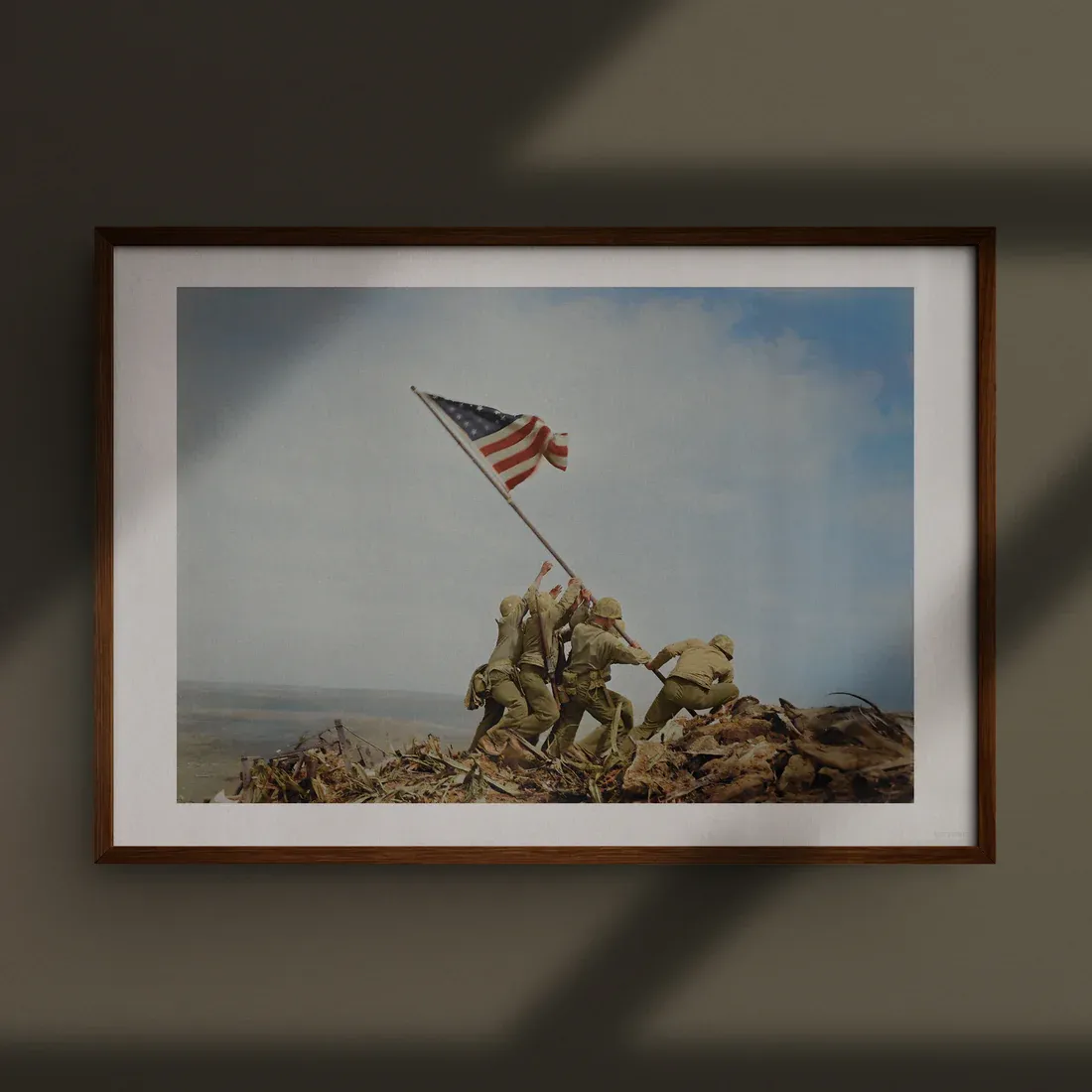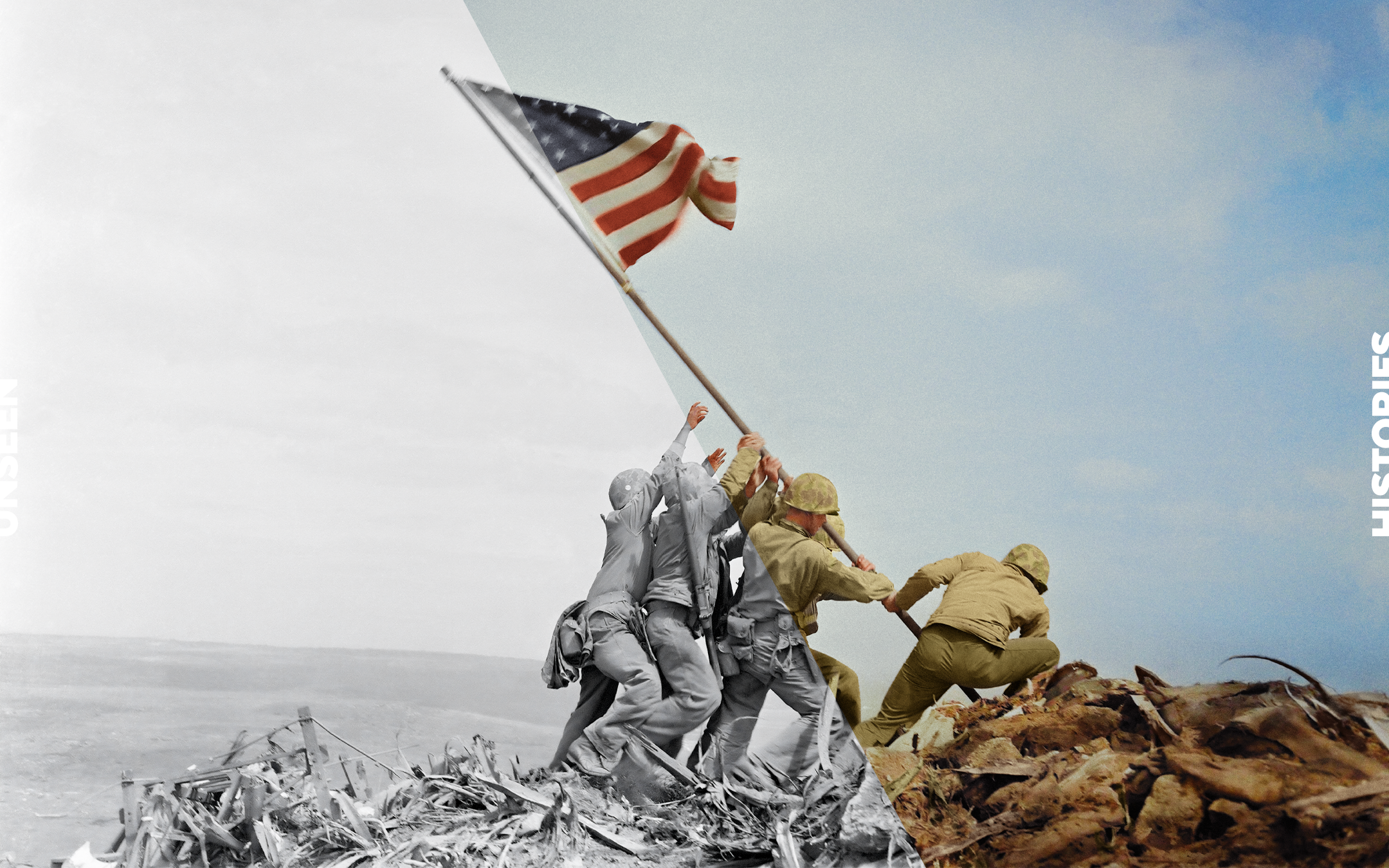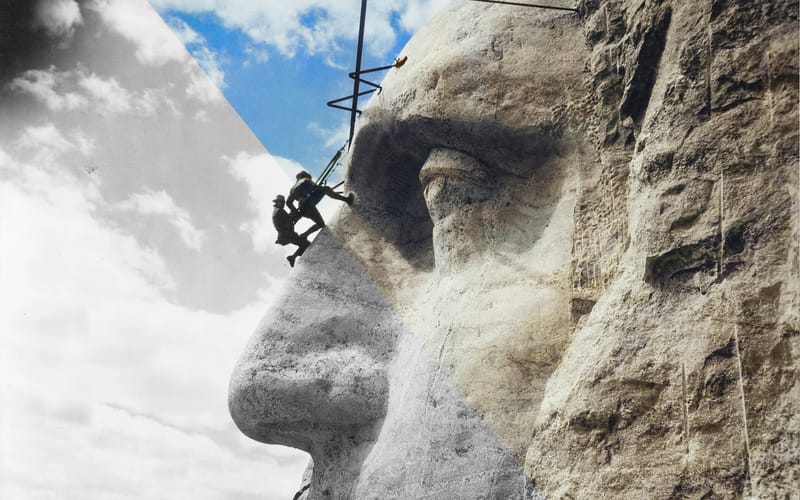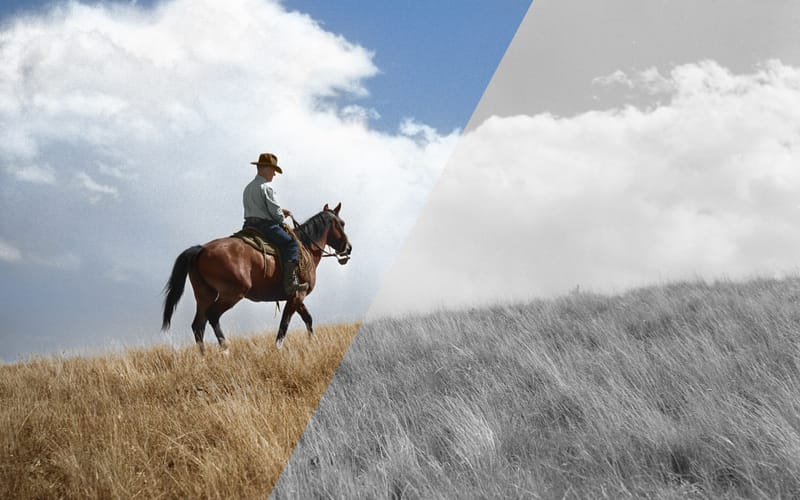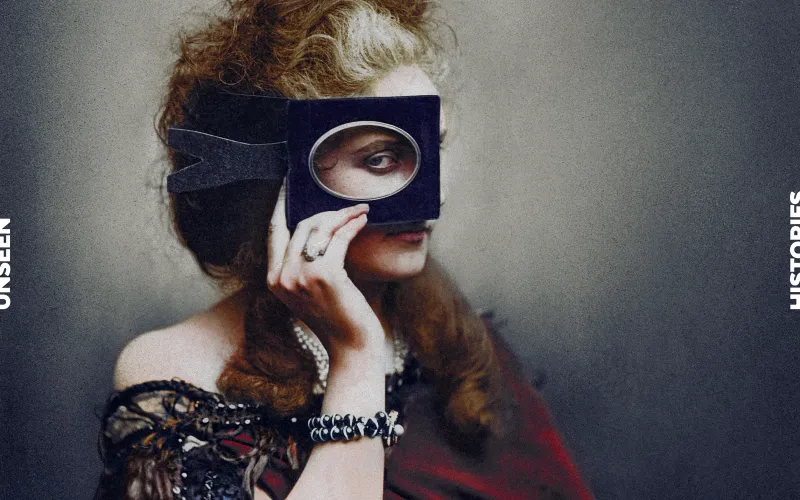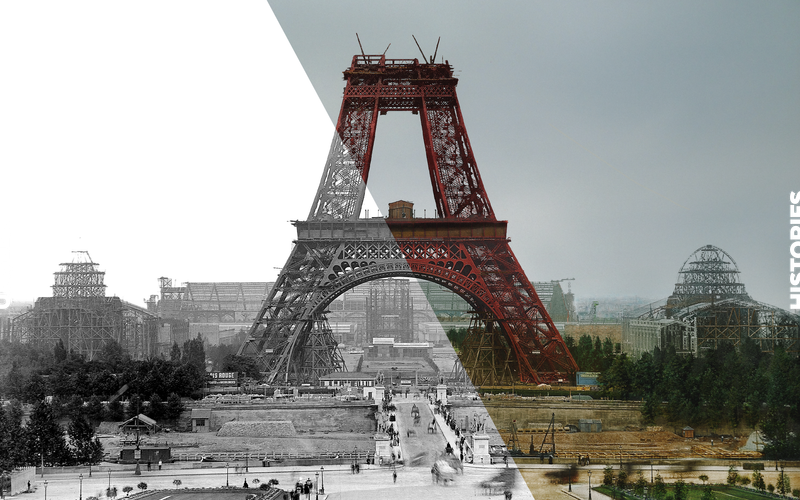Raising the Flag Over Iwo Jima, 1945
On 23 February 1945, one of the iconic photographs of the Second World War was taken on the Pacific island of Iwo Jima

Joe Rosenthal's image of six US Marines planting the Stars and Stripes on Mount Suribachi, Iwo Jima, has become one of the war’s most enduring and recognisable photographs.
Taken around 1 p.m. on 23 February 1945, as a fierce battle raged on the slopes below, the photograph’s narrative power was immediately clear once developed. It portrayed extraordinary heroism in the face of adversity, along with profound patriotism and kinship.
Rosenthal's image was swiftly reprinted in newspapers around the world. The Soviets were so impressed that they went to great lengths to replicate it when the Red Army arrived in the centre of Berlin several months later.

The Battle of Iwo Jima was one of the most deadly confrontations of the Pacific War. A small island located due south of the Japanese mainland, Iwo Jima became a place of huge strategic importance in the early months of 1945. Its two airfields, it was clear to US generals, would provide a perfect base for future attacks on Japan.
After an amphibious landing on 19 February, US Marines confronted a defending force that was dug in and determined to hold their ground. American casualties on the island’s black sands during the first three days were steep, totalling 5,372 with 644 killed, 4,168 wounded and 560 missing.
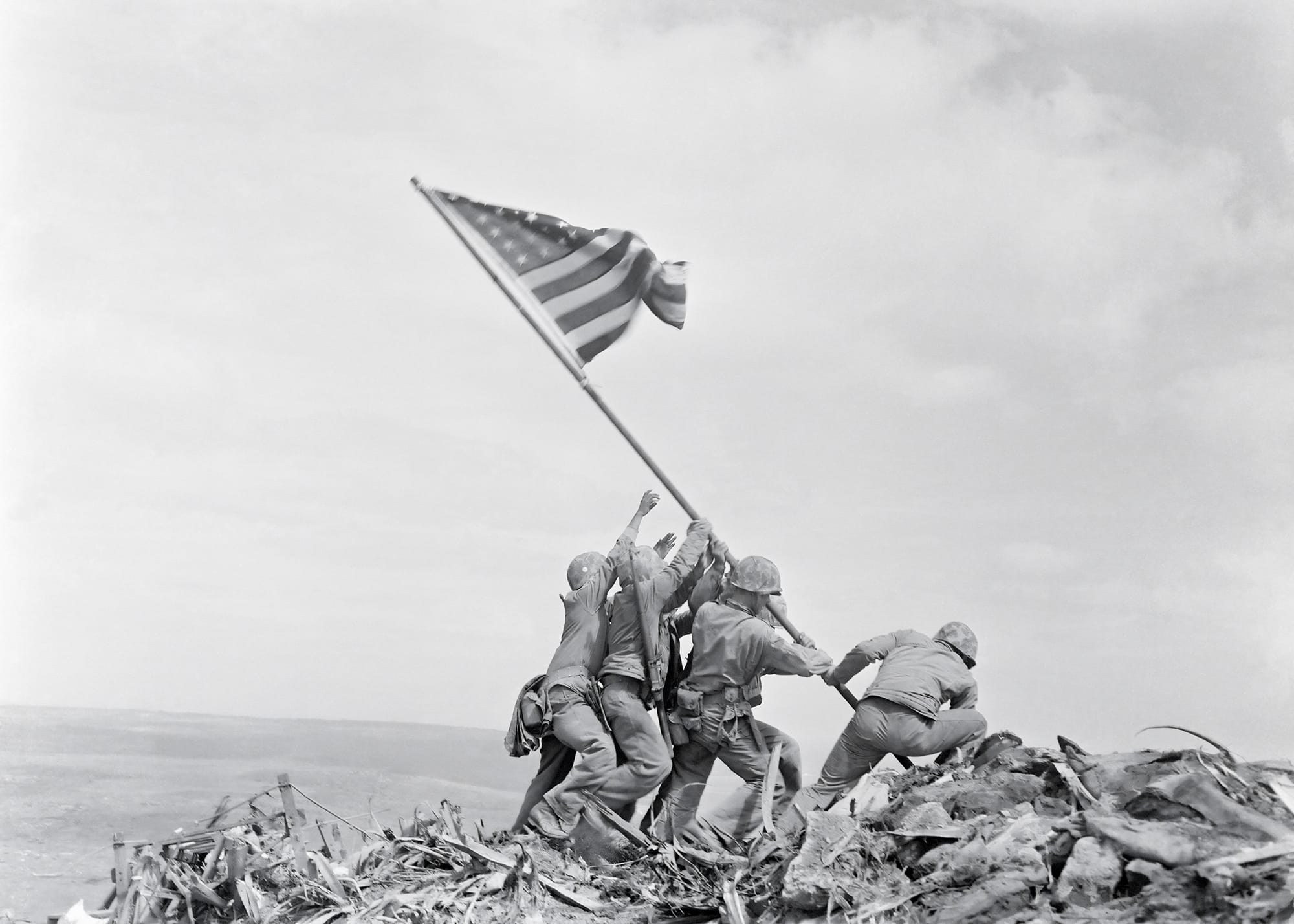
Once ashore the defensive fortress Mount Suribachi became a vital target. Rising on the southwestern tip of the island, the volcanic peak was a particular stronghold with its many caves and tunnels. Clashes here were deadly. On 23 February, Barbara Finch, the Reuter’s Special Correspondent reported that US forces were advancing up Suribachi’s slopes, sweeping caves with flame throwers as warships shelled the mountainside from the coastal shallows. ‘The defending Japanese threw hand grenades in an attempt to stop the Marines scaling the cliffs.' ran Finch's report, 'Eight Japanese were seen to leap to death from the rocks hundreds of feet above the ground.’
This was the context for Rosenthal’s photograph. As the fighting continued below, on the morning of 23 February members of the 28th US Regiment of Marines fought their way to the volcano’s summit. An American flag was planted here shortly after 10.30, but this was not the moment Rosenthal captured. Instead, he arrived several hours later, at around one o'clock, as a second flag was hoisted up at the same location.
The photograph Rosenthal shot was taken with a Speed Graphic camera, with an exposure length of 1/400 sec, and an aperture of between 8 and 11, on Agfa black and white film. A ⇲ video exists of the scene, which shows that Rosenthal had only a fraction of a second to take his shot.
"Out of the corner of my eye, I had seen the men start the flag up. I swung my camera and shot the scene. That is how the picture was taken, and when you take a picture like that, you don't come away saying you got a great shot. You don't know." — Joe Rosenthal
‘Raising the Flag on Iwo Jima’ would soon win Rosenthal a Pulitzer Prize for Photography. On one level it is a depiction of military triumph, but it equally must be seen as a testament to human sacrifice. Of the six marines in the frame, three would be dead within a month. These were just three of the twenty-five thousand or so who lost their lives in little more than a month.
This colorization by Jordan J. Lloyd brings out many new details. The ground is strewn with debris. Overhead there is a hint of a bright blue Pacific sky. The rich colours of the Stars and Stripes stand out all the more thanks to the cloud that lies directly behind.
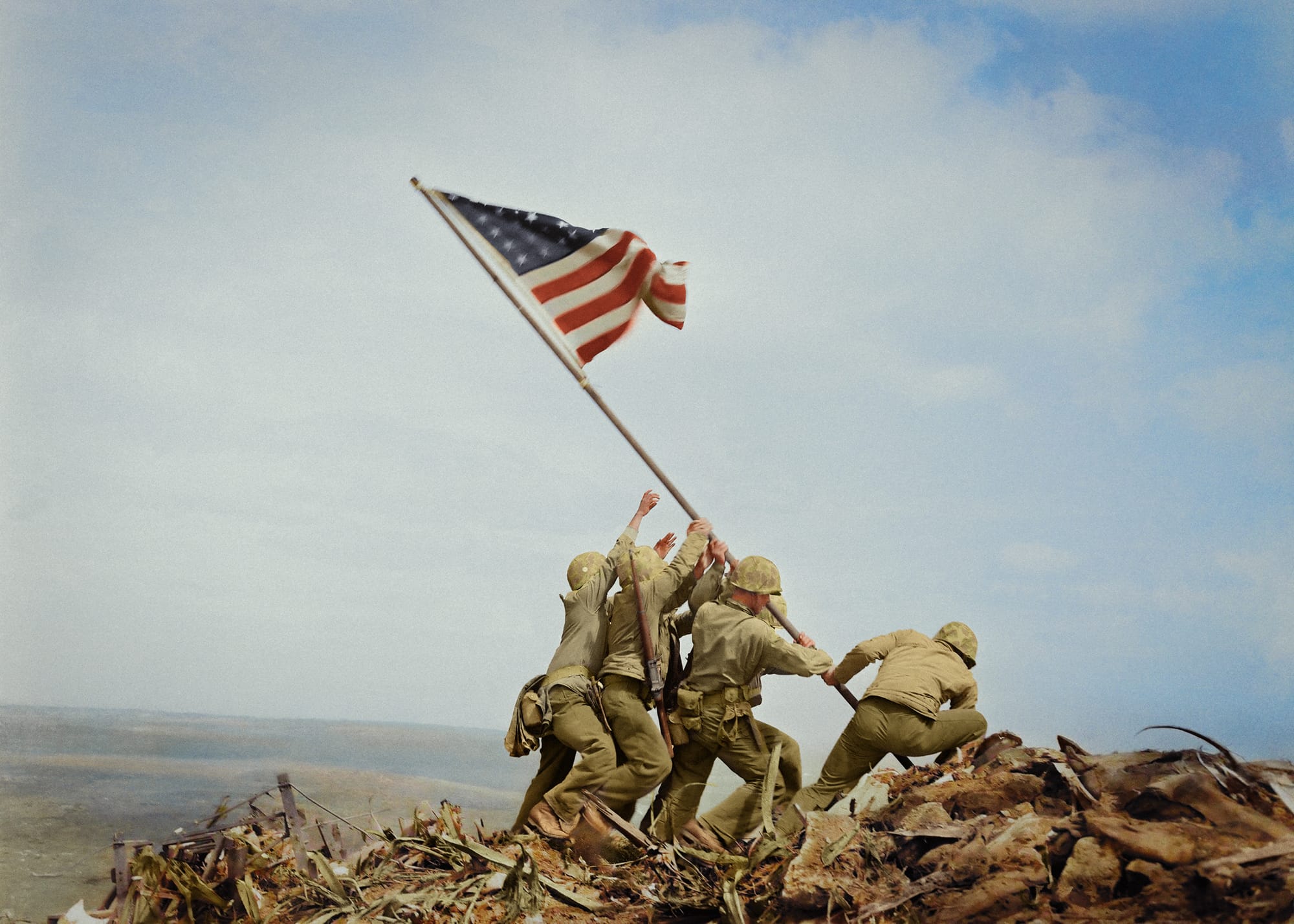
Within hours the news would be carried in newspapers around the world. ‘The American flag to-day flies on the summit of Mount Suribachi’, reported one English paper on 23 February. A few days later reprintings of Rosenthal’s photograph would follow. 𖨠
Joe Rosenthal (1911–2006) was an American photojournalist whose iconic image of U.S. Marines raising the flag on Iwo Jima during World War II earned him the Pulitzer Prize for Photography. Beyond this historic photograph, Rosenthal worked for the Associated Press and later for the San Francisco Chronicle, capturing compelling moments of both war and civilian life. His dedication to documenting stories through his lens solidified his reputation as one of the most significant photographers of the 20th century.
